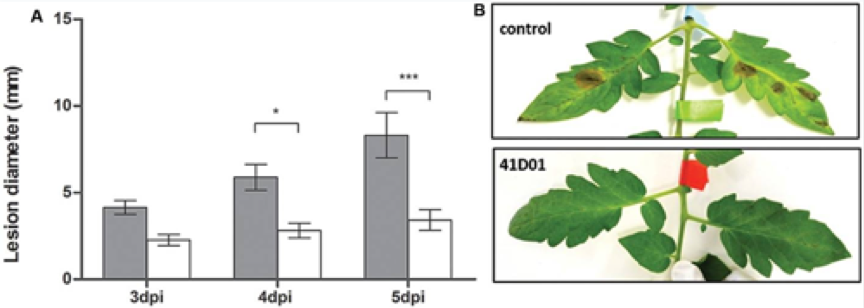2018-12-06 Hits(93)
In the paper from B. De Coninck et al. , the authors take advantage of VHH (single domain antibodies) from Llamas to protect plants from fungal infection.
The authors chose to target the fungal glucosylceramides (fGlcCer), a ubiquitous component of eukaryotes membrane already known to be the target of plant defensins (the antimicrobial peptides produced by plants). They immunized Llamas with several fGlcCer, to construct a library of VHH from the blood mononuclear cells. Then the library was screened by phage display.
The selected VHH show a good binding to the fungal GlcCer and no cross reactivity with GlcCer from plants or mammalian. Furthermore, when incubated with different fungi the VHH is able to inhibit the fungal growth in a comparable way to the defensins. Finally, when simply sprayed on tomato leaves, the VHH reduces the symptoms caused by a fungal infection as you can see in the picture below. These results open the possibilities to use VHH as an alternative to fungicides or insecticides and more.

Image: (A) The diagram shows the difference in lesion diameters between the control (grey bars) and the treated leaves (white bars). (B) The photo shows tomato leaves non-treated by the spray of VHH vs treated tomato leaves.
VHH or nanobodies are single domain antibodies presenting multiple advantages. Due to their small size they are very stable and easy to produce and still retain a high affinity and specificity for antigens. KMD Bioscience can provide comprehensive, high quality camelid VHH antibody library services based on phage display for the majority of scientific research clients. And should you have any questions, our technical specialists are available to help.